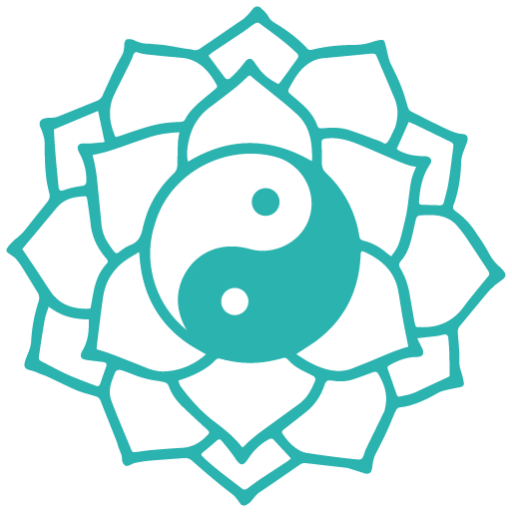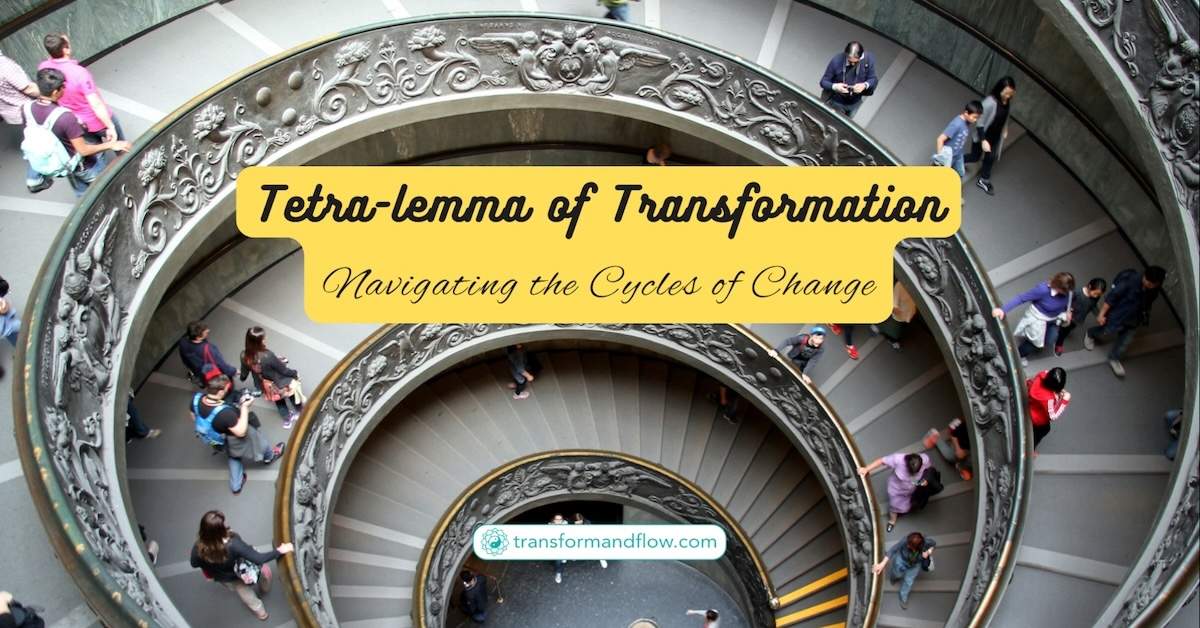Imagine a journey, not across physical terrain, but through the internal landscape of personal transformation. We can map this journey using a framework called the Tetra-lemma of Transformation, which illuminates how we move from unconscious stagnation to conscious mastery. This framework explores the interplay between awareness (or its absence) and the presence of empowering action (light) or debilitating passivity (dark).
Let’s illustrate this with feeling trapped in a cycle of two common experiences:
Scenario A. Unhealthy habits, like consistently procrastinating on important tasks.
Stage 1: The Blind Spot (Ignorance & Dark)
At this stage, we’re operating on autopilot. We’re unaware of the patterns that hold us back.
Our procrastination is a given; we don’t question it. We might say, “That’s just how I am.” We’re submerged in the “dark” of unconscious habit, with no awareness of the negative impact on our productivity or well-being.
As an example, James says to himself:
“I just always leave things until the last minute. It’s stressful, but I don’t really think about it. It’s just how I work.”
Stage 2: The Dawning Recognition (Aware & Dark)
A flicker of awareness begins. This isn’t a sudden epiphany but a subtle unease.
We start to recognize the pattern of procrastination and its consequences. We feel a longing for change, but we’re still trapped in the “dark” of inaction. We lack the will or the tools to break free.
James thinks:
“I know I shouldn’t be doing this again. I always regret leaving things so late. I wish I could just start earlier, but I don’t know how.”
Stage 3: The Frustration of False Starts (Ignorance & Light)
Driven by the desire for change, we enter a phase of action, but often without clarity or direction. We try various methods, seeking quick fixes or external solutions. These attempts are often scattered and unsustainable, leading to frustration and a sense of failure. We are in the “light” of action, but still lack the “awareness” of what truly works for us.
James explores:
“I tried a new time management app, but I forgot to use it. I read a book on productivity, but it didn’t stick. I even tried setting alarms, but I just snoozed them. Nothing works!”
Stage 4: The Path of Personalized Mastery (Aware & Light)
Through trial and error, we begin to discern what strategies resonate with our unique needs and circumstances. We develop a personalized approach, integrating tools and techniques that align with our personality and lifestyle. We are now in the “light” of effective action, guided by the “awareness” of our own patterns and preferences.
James learns:
“I realized I work best in short bursts with frequent breaks. I break down large tasks into smaller, manageable steps, and I reward myself for completing them. I also find that journaling helps me stay focused and accountable.”
Stage 5: The Transcendence of the Pattern (Freedom)
Looking back, we recognize the journey we’ve undertaken. The pattern of procrastination no longer holds power over us. We’ve integrated the lessons learned, and the “issue” has become a part of our past, a testament to our growth. This newfound mastery frees up mental space, allowing us to address other areas of our lives.
James reflects:
“I used to be a chronic procrastinator, but now I consistently complete tasks on time. I’ve learned so much about myself in this process, and I’m applying these lessons to other areas of my life.”
Scenario B. Social anxiety, which limits our ability to connect with others.
Stage 1: The Blind Spot (Ignorance & Dark)
At this stage, we’re operating on autopilot. We’re unaware of the patterns that hold us back.
Our social anxiety is a given; we don’t question it. We might rationalize our isolation, saying, “I’m just an introvert,” or “People are too much.” We’re submerged in the “dark” of unconscious avoidance, with no awareness of the emotional toll it takes or the missed opportunities for connection.
As an example, Sarah, a young professional, consistently avoids social gatherings. Her coping mechanism:
She declines invitations to office parties, makes excuses to skip after-work drinks, and spends her weekends alone. She tells herself she prefers her own company and that socializing is draining. She’s unaware of the growing sense of loneliness and the professional opportunities she’s missing. When colleagues try to engage her, she offers short, polite responses and quickly retreats to her workspace, reinforcing her isolation.
Stage 2: The Dawning Recognition (Aware & Dark)
A flicker of awareness begins. This isn’t a sudden epiphany but a subtle unease.
We start to recognize the pattern of avoidance and its consequences. We feel a longing for connection, a desire to break free from self-imposed isolation. However, we’re still trapped in the “dark” of inaction, paralyzed by fear and lacking the tools to break free.
Sarah starts to realize:
Sarah experiences a pang of envy when she sees her colleagues laughing and connecting during a team lunch. She recognizes the pattern of her isolation and feels a wave of sadness. She thinks, “I wish I could be like them, but I just feel so awkward and anxious. What if I say something stupid? What if they don’t like me?” She understands that her avoidance is limiting her, but the fear feels overwhelming, and she doesn’t know where to start.
Stage 3: The Frustration of False Starts (Ignorance & Light)
Driven by the desire for change, we enter a phase of action, but often without clarity or direction. We try various methods, seeking quick fixes or external solutions. These attempts are often scattered and unsustainable, leading to frustration and a sense of failure. We are in the “light” of action, but still lack the “awareness” of what truly works for us.
Sarah trys:
Sarah decides to “force” herself to be more social. She attends a large networking event, but her anxiety skyrockets, and she spends most of the time standing alone, feeling overwhelmed. She tries to engage in conversations, but her voice trembles, and she struggles to make eye contact. She downloads a social skills app, but finds the exercises artificial and unhelpful. She even tries to “fake it till she makes it,” but her forced enthusiasm feels inauthentic, and she leaves each interaction feeling more defeated.
Stage 4: The Path of Personalized Mastery (Aware & Light)
Through trial and error, we begin to discern what strategies resonate with our unique needs and circumstances. We develop a personalized approach, integrating tools and techniques that align with our personality and lifestyle. We are now in the “light” of effective action, guided by the “awareness” of our own patterns and preferences.
Sarah finds the particular method that works for her for this particular challenge:
Sarah begins to work with a therapist who helps her understand the root causes of her anxiety. She learns mindfulness techniques to manage her physical symptoms and practices small, manageable social interactions. She starts by engaging in brief conversations with familiar colleagues, gradually increasing the duration and complexity. She joins a small book club, where she feels more comfortable sharing her thoughts in a supportive environment. She discovers that focusing on active listening and asking thoughtful questions helps her connect with others without feeling pressured to be the center of attention.
Stage 5: The Transcendence of the Pattern (Freedom)
Looking back, we recognize the journey we’ve undertaken. The pattern of procrastination no longer holds power over us. We’ve integrated the lessons learned, and the “issue” has become a part of our past, a testament to our growth. This newfound mastery frees up mental space, allowing us to address other areas of our lives.
Sarah evolves past her previous experience:
Sarah now enjoys social interactions. She attends office parties with ease, builds meaningful connections with colleagues, and even volunteers to lead team-building activities. She recognizes that her social anxiety was not a fixed trait, but a pattern she could overcome. She uses the skills she learned to navigate other challenging situations, feeling more confident and empowered in all areas of her life. She also notices that she has more energy to dedicate to other goals, like her career, and hobbies.
The Ongoing Cycle:
It’s important to understand that this is not a linear, one-time process. Life is a series of cycles, and we’re constantly navigating different “issues” at various stages. Our consciousness brings to our attention those areas where we’re ready to evolve through, ensuring that we’re always growing and transforming.
This Tetra-lemma of Transformation offers a framework for understanding the journey of personal change. It reminds us that progress is not always smooth or immediate, but that with awareness and consistent effort, we can break free from limiting patterns and create a life of greater fulfillment.
Check out The Bridge to Change: Action as the Essential Link


